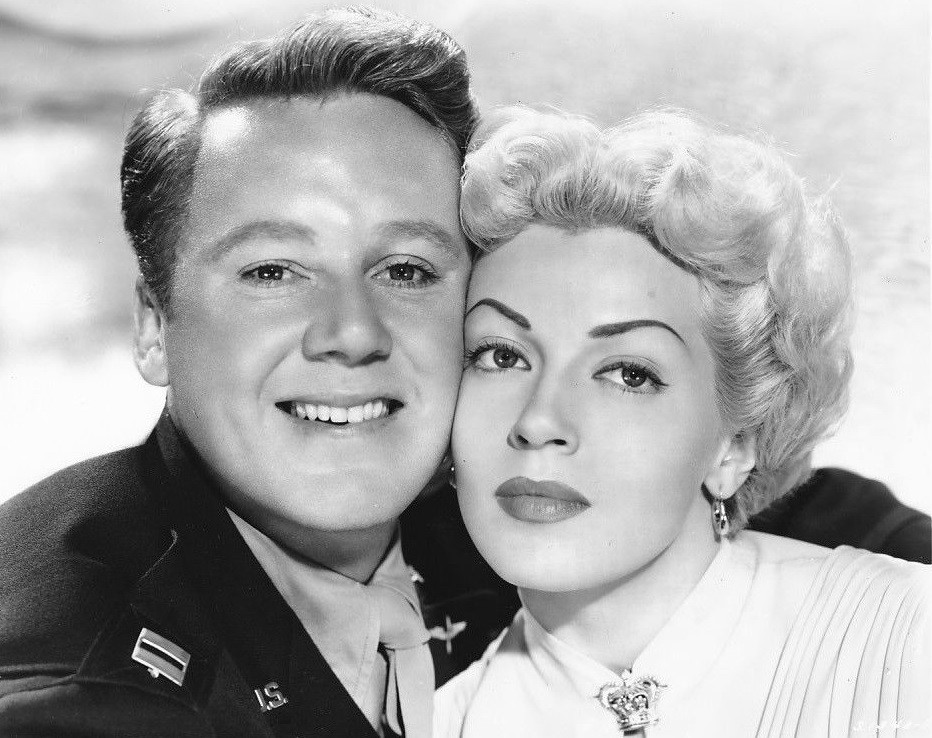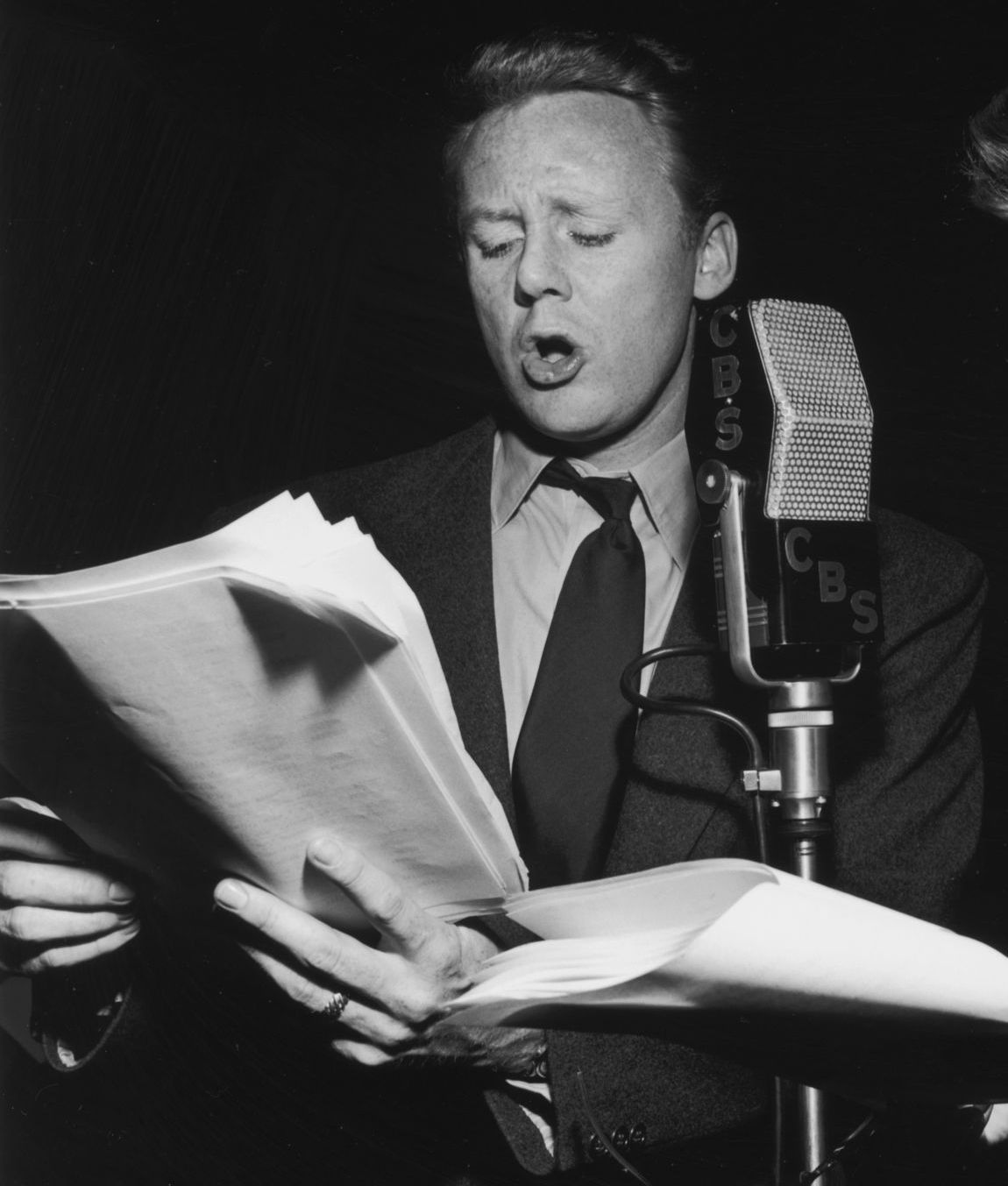Happy Birthday, Van Johnson!
Posted by Ivan G. Shreve, Jr. on Aug 25th 2019
During the 1940s, the man born Charles Van Dell Johnson in Newport, Rhode Island on this date in 1916 was known as Metro-Goldwyn-Mayer’s “boy next door.” Van Johnson’s affable charm and golden-boy looks (red hair and freckled face—Van used to joke he “got paid by the freckle”) made him the ideal actor to portray any variety of fresh-scrubbed innocents who, during the course of the motion picture, wound up enlisting as a soldier, a sailor, or a bomber pilot. “I’d been in every branch of the service, all at MGM,” Johnson mused at the end of WW2. In real life, the actor was rejected by the military because of a steel plate in his head—an unwanted souvenir from an automobile crash that nearly took his life in 1943 (while he was filming one of his most successful MGM pictures, A Guy Named Joe).
Van Johnson was an only child, born to Charles E. (a plumber and later
real-estate salesman) and Loretta (Snyder). Charles would soon take on
both father and mother roles after Loretta (an alcoholic) abandoned the family
while Van was still a youngster. The relationship between Johnson pere et fils was, sadly, a strained one. Van’s show business
beginnings can be traced to his performing at social clubs in his hometown of
Newport, and after graduating in 1935 he moved to New York City to join an
off-Broadway revue, Entre
Nous.
Van Johnson’s terpsichorean talents were developed while he toured New
England in a theatre troupe (as a substitute dancer). His break on
Broadway came in the form of the revue New Faces of 1936 (which also featured Imogene Coca and June Blair among the “new
faces”) and when that closed it was back to the chorus for an endless series of
engagements along with work at resort hotels. Director-playwright George
Abbott liked him well enough to give him a job playing a college boy in his
1939 production of Too
Many Girls. When Girls went West for the big screen treatment from R-K-O in
1940, Johnson made his movie debut in that film (though he was uncredited).

Van Johnson wouldn’t receive credit onscreen until 1942’s Murder in the Big House, a B-picture he made at Warner Brothers. Before Murder, Johnson was all set to head back to New York and the stage after filming
wrapped up on Too Many
Girls, but a fortuitous meeting one night at Chasen’s (Johnson had
gone there with Girls co-stars Lucille Ball and Desi Arnaz) with an MGM
casting director eventually landed him the Warner’s contract (at $300 a
week). The studio dyed Johnson’s hair and eyebrows jet-black (something
that’s noticeable in his first MGM vehicle, a Crime Does Not Pay short called For the Common Defense[1942]), but Van’s cheerful demeanor and matinee idol looks were out of place at the
grittier Warner, and six months later he wound up at MGM.
His first film for Leo the Lion was an uncredited role in Somewhere I’ll Find You (1942). Johnson’s next film, The
War Against Mrs. Hadley (1943), was so well-received by audiences that the studio decided to cast him as Lew Ayres’ replacement in their Dr. Kildare franchise opposite Lionel Barrymore (as Dr. Gillespie). The
Kildare films—and vehicles like The
Human Comedy (1943) and Pilot #5(1943)—continued to bolster Van’s stock at MGM. He was then cast as a young pilot mentored by a guardian angel (Spencer Tracy) in A Guy Named Joe (1943). On his way to an MGM screening with friends, Johnson’s
convertible was broadsided by a car that ran a red light. He would undergo several surgeries to repair a fractured skull, severe facial injuries, a severed
artery in his neck, and to remove bone fragments that were piercing his brain.

A
Guy Named Joe stars Spencer
Tracy and Irene Dunne overruled MGM’s plans to replace Van Johnson, who
returned to the picture with a noticeably scarred forehead.
(Johnson would spend extra time in the makeup chair to conceal this in
subsequent pictures.) Not only did the metal plate on the left side
of his head ensure his 4-F status throughout the war, but the
accident also provided Van with the kind of publicity that money
can’t buy. His popularity with “bobby soxers” was second only to Francis Albert Sinatra—as such, the press jokingly
tagged Johnson with the nickname “The Voiceless Sinatra.” Van’s post-Joe project was Two Girls and a Sailor (1944), the first of six films he appeared in alongside
June Allyson. The other five included Till the Clouds Go By (1946), High Barbaree (1947), The Bride Goes Wild (1948), Too
Young to Kiss (1951), and Remains
to Be Seen(1953).
Johnson made the same number of films with leading lady Esther Williams; they
appeared together in Joe and Clouds, as well as Thrill
of a Romance (1945), Easy
to Wed (1946), Duchess of Idaho (1950), and Easy to Love(1953).
Van Johnson’s success in movies would soon spread to radio.
He would be called upon to reprise many of his movie roles on the popular
dramatic anthologies of the day, including Best Plays, The General
Electric Theatre, Hallmark
Playhouse, The Lady
Esther/Camel Screen Guild Theatre, The Lux Radio
Theatre, NBC
Playhouse, Radio’s Reader
Digest, Stagestruck, Theatre
Guild on the Air, and Theatre of
Romance. (Van appeared on “radio’s outstanding theatre of
thrills”—Suspense—five times!) In addition, Johnson guest starred on
variety series like The Big Show and Front
and Center (starring Dorothy Lamour). He also joshed with such
personalities as Jack Benny, George Burns & Gracie Allen, Jimmy Durante,
and his “rival” Frank Sinatra. (The March 20, 1949 broadcast of
Benny’s Lucky Strike
Program remains one of his funniest half-hours, as Jack
and Van go to Ciro’s on a double date…with Mabel and Gertrude!)
Van Johnson’s career at MGM wasn’t just frothy musical comedies and
lighthearted romances: he turned in memorable performances in serious fare such
as State of the Union(1948), Command Decision (1948), and the all-star Battleground(1949), one of his finest
films. 1954’s The
Caine Mutiny also provided Van with an outstanding acting showcase as the Naval
officer court-martialed after taking command from paranoid captain Humphrey
Bogart. In addition to movies, Johnson began making inroads into
television with guest appearances on the likes of I Love Lucy, The Ann
Sothern Show, Ben Casey, and Batman (as The Minstrel!). (Johnson turned down the
Elliot Ness role on TV’s The
Untouchables—can you believe it?) Van would continue to work throughout his
career (his role on 1976’s Rich
Man, Poor Man netted him an Emmy nomination). Before his passing in 2008 at
the age of 92, he received more than a few positive reviews for a
small but entertaining turn in Woody Allen’s The Purple Rose of Cairo (1985).

It was joked that when Van Johnson married Evie Abbott (Keenan Wynn’s ex-wife) in 1947, his young female fans were so heartbroken they wore their bobby socks at half-mast. I got a million of ‘em—and so does Jimmy Durante, who welcomes our birthday boy as a guest on the March 10, 1948 broadcast of his Rexall program on our Radio Spirits collection The Jimmy Durante Show. Happy birthday, Van!

